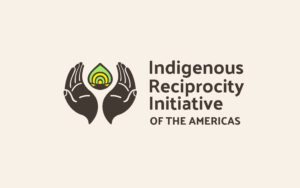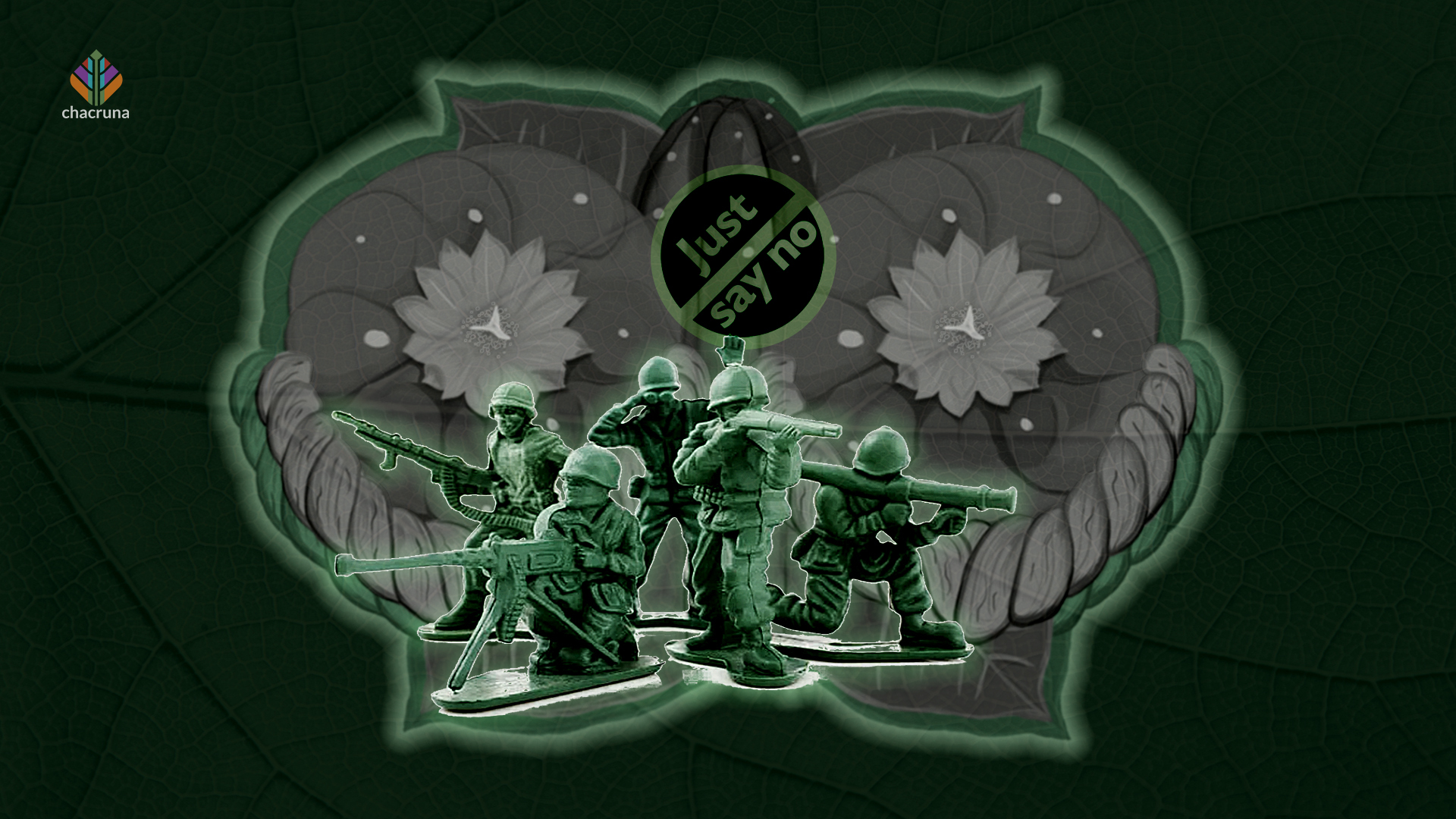- Psychedelic Culture and the Future of the Psychedelic Movement - April 27, 2024
- Eight Frequently Asked Questions About Ayahuasca Globalization - February 13, 2024
- Ten Tips for Standing in Solidarity with Indigenous People and Plant Medicines - January 18, 2024
In the opening pages of the Communist Manifesto (1848), Marx and Engels presented an analysis of the fundamental characteristics of industrial capitalism in the mid-nineteenth century. In doing so, they ended up identifying patterns of capital’s functioning that still hold true today, despite its incredible transformations. The main feature of these patterns is its need for constant expansion in search of new raw materials and new markets. Capitalism, like an insatiable beast, always requires more resources to avoid succumbing.
This unstoppable race for more resources and accumulation began as early as the sixteenth century with the conquest of the Americas. The American continent was one of the first major frontiers of capitalist expansion, and still is. In modern times, new demands of the global economy drive the advancement into lands that are still relatively unexplored and hold immense mineral and biological wealth. These riches include lithium, rare earths, oil, iron ore, gold, lands for extensive meat and grain production, and valuable timber, in addition to the precious molecules available in the incredible biodiversity of the continent.
Just like in the early centuries of European conquest, the coveted lands today are not uninhabited. Data from CEPAL (Economic Commission for Latin America and the Caribbean) estimates that there are 45 million people with Indigenous ancestry from Alaska to Patagonia, belonging to approximately 900 different peoples or cultures (Comissão Econômica para a América Latina e o Caribe [CEPAL] 2015). Centuries of genocide were not able to eliminate the Indigenous populations of the Americas but subjected them to the most difficult living conditions.
Find more information on the upcoming Psychedelic Culture Conference.
According to the World Bank, Indigenous populations are among the poorest 25% of the societies on the continent (Belmont, n.d.). Like the early peoples who faced European invasion, contemporary Indigenous peoples continue to be harassed, pressured, assassinated, and expelled from their lands due to the advance of the global market and its hunger for resources.
Since the nineteenth century, the new ruling elites followed the colonial pattern of seizing lands and forcibly displacing, forcibly assimilating, or simply eliminating their inhabitants. The resistance of Indigenous peoples has resulted in political achievements such as legal protections for their ancestral lands, recognition of the right to preserve cultural practices, and participation in political spheres. However, the current needs for raw materials, markets, and resources in global capitalism have ushered in a new era of violence and greed over the lands inhabited by Indigenous peoples.
There are many ways in which Indigenous peoples are attacked and subjected to this logic of exploitation. One of these ways occurs through the presence of military forces from many countries on ancestral lands, justified by the fight against organized crime, especially drug trafficking.
There are many ways in which Indigenous peoples are attacked and subjected to this logic of exploitation. One of these ways occurs through the presence of military forces from many countries on ancestral lands, justified by the fight against organized crime, especially drug trafficking. Since the emergence of a global illegal drug economy from the 1960s onwards, the American continent has been at the center of a storm of violence, death, and deterioration of institutions related to the global illegal drug economy.
This happened because illegal drugs highly demanded by the world’s major markets—the United States and Western Europe—were produced, or had the potential to be produced, in Latin America and the Caribbean. This was the case with cannabis between the 1960s and 1970s and, especially, with cocaine from the late 1970s onwards. The Andean region became the center of the cocaine economy, as this drug is synthesized from the coca leaf, a native shrub of the Andean highlands whose multiple psychoactive and nutritional properties have been known for millennia.
The approach to combating the illegal drug market, driven by the US, and replicated worldwide, became the so-called “War on Drugs,” based on the militarization of the fight against drug trafficking groups, repression of users, mass incarceration of the poorest populations, and the use of public security policies as instruments to wage an “internal war” in the name of national elites’ interests and global capitalism.
The approach to combating the illegal drug market, driven by the US, and replicated worldwide, became the so-called “War on Drugs,” based on the militarization of the fight against drug trafficking groups, repression of users, mass incarceration of the poorest populations, and the use of public security policies as instruments to wage an “internal war” in the name of national elites’ interests and global capitalism.
In the face of the War on Drugs, narco organizations are incentivized to be creative and flexible, seeking new routes for drug trafficking and remote regions for illegal crop cultivation and clandestine laboratories. In Latin America and the Caribbean, this meant the overlap between the illegal drug economy and the lands of Indigenous peoples; the same areas coveted by global capitalism.
According to researcher Dawn Paley, combating drug trafficking is now the primary justification for states to maintain intervention policies in Indigenous territories, leading to mass displacement, physical annihilation, or subjugation of Indigenous peoples (Paley, 2015). Political authorities and their police and military advisors argue that the reason for these incursions is the presence of drug trafficking groups. However, it is not a coincidence that the areas targeted by the War on Drugs are rural or rainforest regions rich in natural resources. These regions, however, coincide with ancestral lands inhabited by Indigenous peoples.
National governments defending the interests of global capitalism act in these regions under the pretext of combating drug trafficking and other transnational crimes. At the same time, governments turn a blind eye, or even encourage the activities of paramilitary groups linked to large landowners and private companies to promote massacres and intimidation. Thus, it is not a coincidence that, in Latin America and the Caribbean, regions that are embroiled in violent land disputes coincide with areas traditionally occupied by Indigenous populations (Indigenous peoples, peasants, and maroons).
In Colombia, the country with the highest illegal production of coca leaves and cocaine, regions with intense illegal activity and equally intense activity from armed groups and military forces overlap with areas of higher Indigenous population density. In the western part of the country, departments such as Cauca and Valle del Cauca comprise around 130 Indigenous communities, totaling approximately 1,000 inhabitants. These communities include the Wounaan, Eperara, Siapara, Inga, Nasa, Embera Chami, and Pasto peoples. The region has an average of 1,500 hectares of illegal coca cultivation annually and is adjacent to two of the largest coca/cocaine-producing regions in the country, the departments of Nariño and Putumayo, on the border with Ecuador. In these departments, there is an estimated Indigenous population of 130,000 people belonging to the Awá, Kofán, and Quillacingas, as well as Eperara, Siapara, Inga, and Pasto peoples (Universidad Nacional de Colombia, 2011).
On the other end of the country, on the border between Venezuela and Colombia, lies the department of Norte de Santander, which currently contains the world’s largest illegal production of coca-cocaine. Indigenous peoples, such as the Yukpa, have been caught in the crossfire between Colombian and Venezuelan state security forces, local drug trafficking groups, representatives of Mexican Gulf and Sinaloa cartels operating in the region, fighters from the National Liberation Army (Ejército de Liberación Nacional), and dissident groups from the Revolutionary Armed Forces of Colombia (Fuerzas Armadas Revolucionarias de Colombia – FARC) (Rodrigues et al., 2022).
Similar situations exist in other countries affected by the illegal drug market and the policies of repression against it. In Peru, Ashaninka communities have been decimated by territorial disputes among groups engaged in various forms of illicit activities. In Brazil, Indigenous peoples in the Amazon and Pantanal regions, such as the Kanamari and Korubo, are constant targets of paramilitaries and drug traffickers. In Central America, a region marked by the action of gangs affiliated with Mexican cartels and Colombian groups, peoples like the Misquitos in Nicaragua and communities of Mayan descent in Guatemala have not been spared from death squads that decimated them while competing for routes and territories (Labate & Rodrigues, 2023).

Discover the Indigenous Reciprocity Initiative of the Americas
In Mexico, from north to south, Mayans, Nahuatl, and Chihuahuas, among others, are victimized for inhabiting regions contested as international drug trafficking routes, areas with clandestine labs for synthetic drugs and heroin, or regions for poppy cultivation. Since May 2023, the dispute among Mexican cartels for control of the border with Guatemala has escalated violence in Zapatista territory, leading to a wave of attacks on Indigenous communities in the state of Chiapas.
Indigenous peoples were the first victims of European colonization and have continued to be targets of the expansion of capitalist economy after the processes of national independence in Latin America and the Caribbean. The current integration of their countries into the global economy remains peripheral and based on the exploitation of natural resources. Thus, old colonial practices are updated in new forms of conquest of territories and attacks on Indigenous populations. These attacks occur through different means, conducted by illegal actors and state security agents, often collaborating, as seen in Brazil, where Yanomami lands were ravaged by illegal mining and the activities of drug trafficking groups during Bolsonaro’s administration.
The War on Drugs is a praxis, meaning it is an articulation between discourses and practices. On one hand, it mobilizes prejudices against the use of psychoactive substances and biases related to class, race, gender, and cultural practices. On the other hand, it sets in motion a repressive machine that suppresses, controls, and displaces populations considered obstacles to the profitability (both legal and illegal) of capital. In the Americas, Indigenous populations—particularly those from regions rich in natural resources—have been drawn into the incessant conflict between organized crime groups, especially drug trafficking, the repressive policies of regional states, and the violent actions of companies and landowners interested in exploiting the resources of their lands.
In the Americas, Indigenous populations—particularly those from regions rich in natural resources—have been drawn into the incessant conflict between organized crime groups, especially drug trafficking, the repressive policies of regional states, and the violent actions of companies and landowners interested in exploiting the resources of their lands.
The critique of the War on Drugs generally focuses on exposing the violence in urban areas against marginalized populations. Indigenous peoples, however, are also victims of this “war,” but they continue to remain invisible, as they always have. It is essential for critics of Prohibitionism and the War on Drugs to include Indigenous populations and other native communities in their studies and advocacy. This inclusion is crucial to raise public awareness about their situation, ensuring that the historical genocide of these peoples does not persist through new and terrible means. The psychedelic movement should embrace activism in drug reform, protecting Indigenous lands and supporting the political struggles of the populations that brought many of these substances to us, whose practices we have carefully studied and imitated (Labate, 2020).
Note: This paper is largely a summary of the previously published one: Labate, B. C., & Rodrigues, T. (2023). The impacts of the drug war on Indigenous peoples in Latin America: An overview. Journal of Psychedelic Studies, 20, 48-57. https://akjournals.com/view/journals/2054/7/1/article-p48.xml.
Art by Mariom Luna.

Shop our Collection of Psychedelic T-Shirts.
References
Belmont, J. (n.d.). Indigenous Latin America. World Bank. https://www.worldbank.org/en/region/lac/brief/indigenous-latin-america-in-the-twenty-first-century-brief-report-page
Comissão Econômica para a América Latina e o Caribe (CEPAL) (2015), Os Povos Indígenas na América Latina Avanços na última década e desafios pendentes para a garantia de seus direitos [Indigenous peoples in Latin America advances in the last decade and pending challenges to guarantee their rights]. United Nations. https://repositorio.cepal.org/server/api/core/bitstreams/674dfaa2-fe61-484a-a61f-390330e9174a/content
Labate, B. C. (2020, November 10). Psychedelic scientists should honor indigenous plants and traditions. Chacruna.net. https://chacruna.net/psychedelic-scientists-indigenous-plants/
Labate, B. C., & Rodrigues, T. (2023). The impacts of the drug war on Indigenous peoples in Latin America: An overview. Journal of Psychedelic Studies, 20, 48–57. https://akjournals.com/view/journals/2054/7/1/article-p48.xml
Paley, D. (2015). Drug war capitalism. AK Press.
Rodrigues, T., Mojica Acevedo, E. C., Espinel Rubio, G. A., & de Souza Pimenta, M (2022). Gobernanza criminal en zonas urbanas de frontera: el caso de Villa del Rosario/Cúcuta (Colombia) y San Antonio del Táchira (Venezuela) [Criminal governance in urban border areas: The case of Villa del Rosario/Cúcuta (Colombia) and San Antonio del Táchira (Venezuela)]. Aldea Mundo, 27(53), 43–53. http://erevistas.saber.ula.ve/index.php/aldeamundo/article/view/18508
Santos Cid, A. (2023, September 17). Chiapas: nueva sangre, viejas guerras [Chiapas: New blood, old wars]. El Pais. https://elpais.com/mexico/2023-09-17/chiapas-nueva-sangre-viejas-guerras.html
Universidad Nacional de Colombia. (2011). Observatorio de Procesos de Desarme, Desmovilización y Reintegración [Observation of the process of disarmament, demobilization and reintegration]. http://sipersn.udenar.edu.co:90/sipersn/docs/DocumentosInformacionSecundaria/Documentosdesoporte/Caracterizaci%C3%B3n%20de%20desarme%20Narino.pdf
Take a minute to browse our stock:
Did you enjoy reading this article?
Please support Chacruna's work by donating to us. We are an independent organization and we offer free education and advocacy for psychedelic plant medicines. We are a team of dedicated volunteers!
Can you help Chacruna advance cultural understanding around these substances?

















